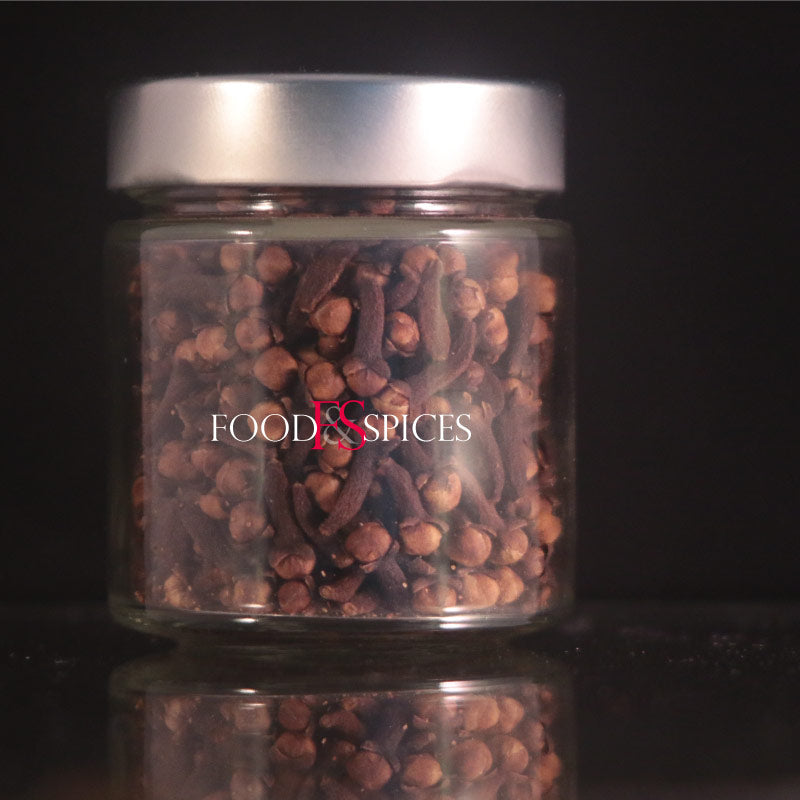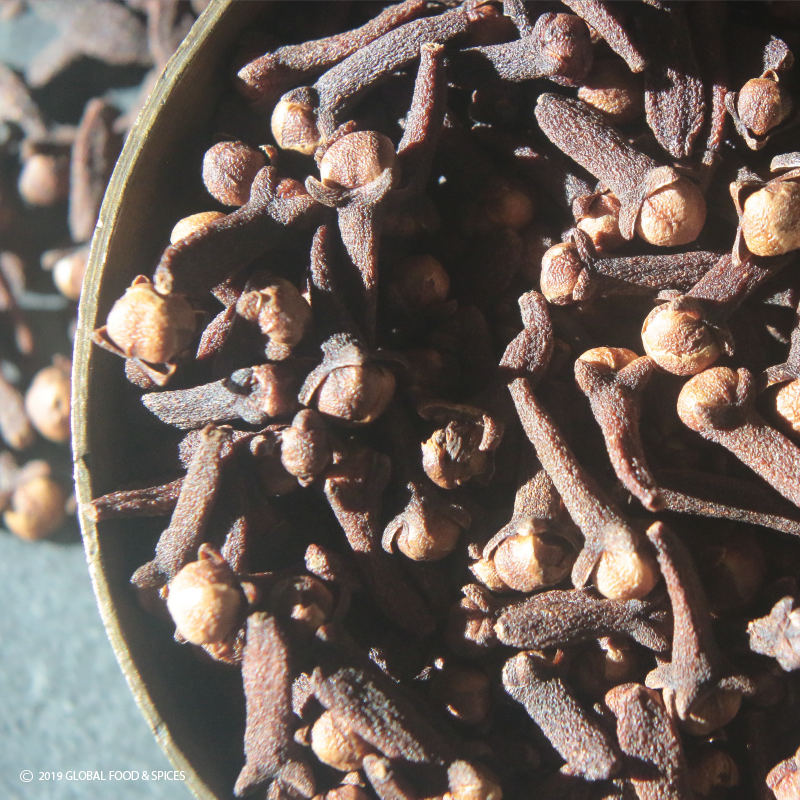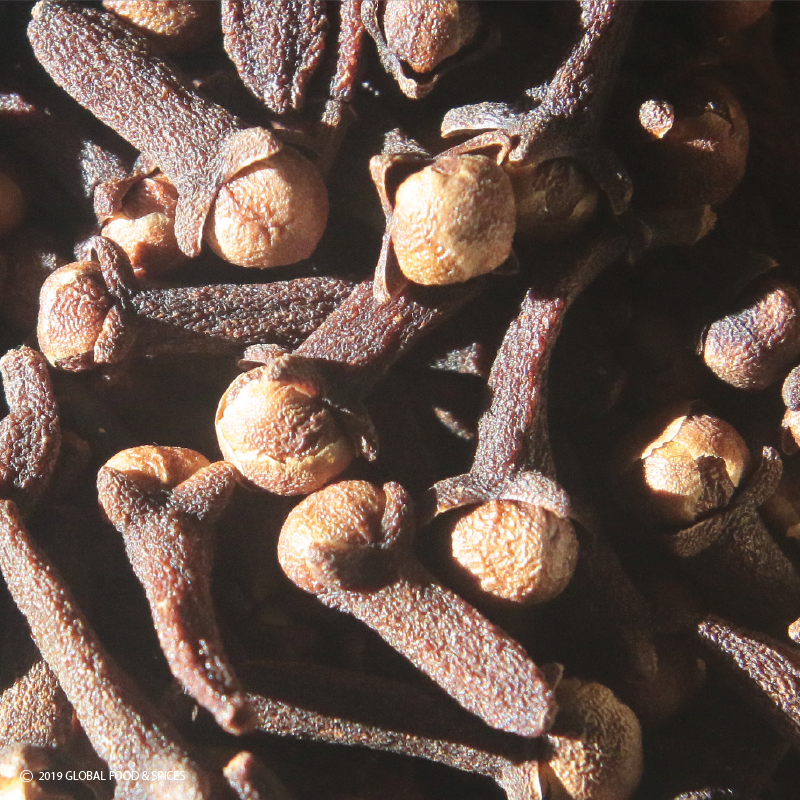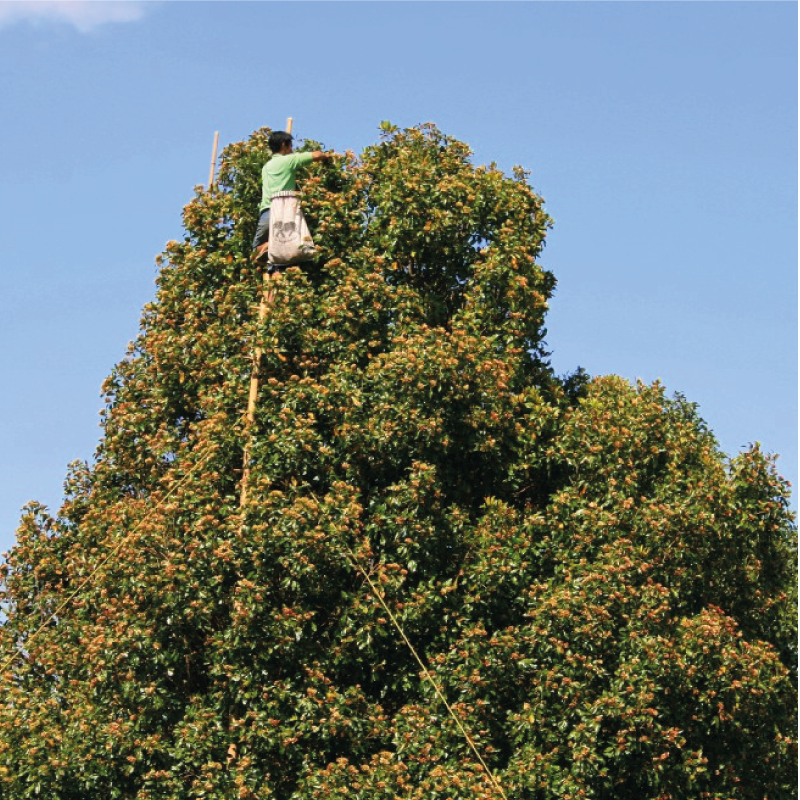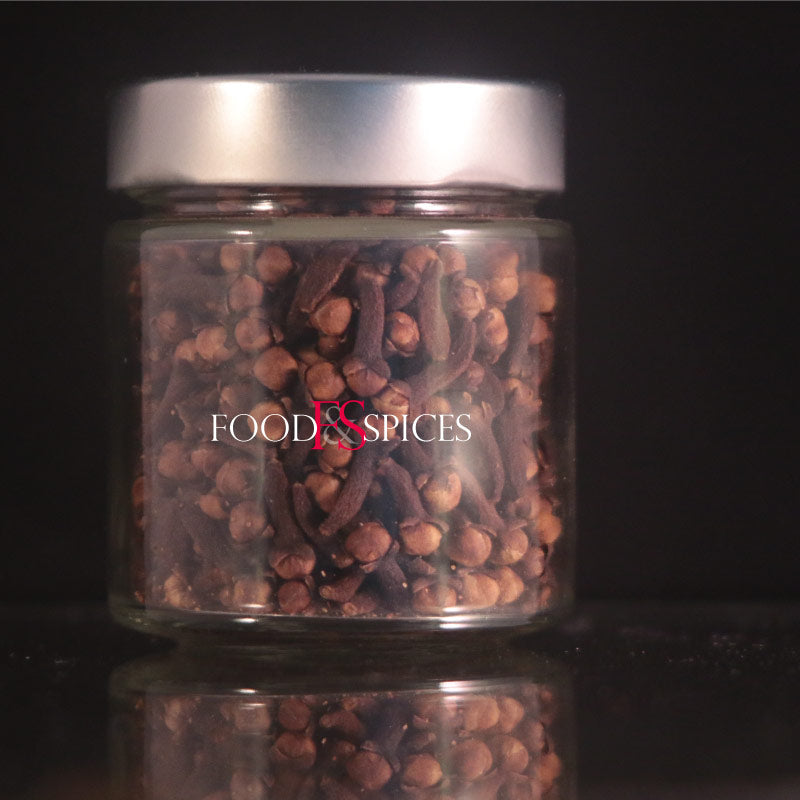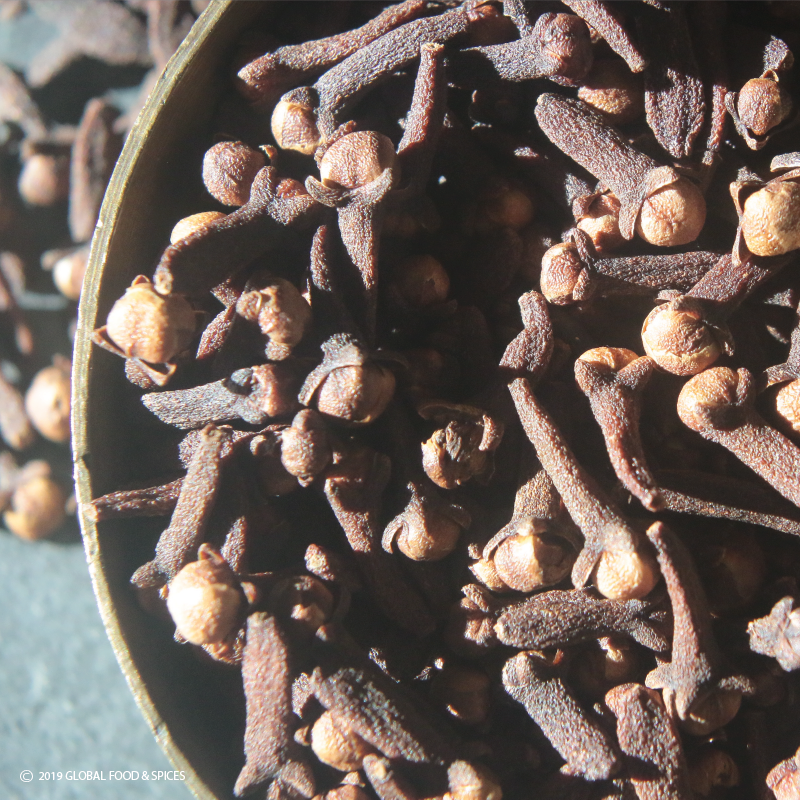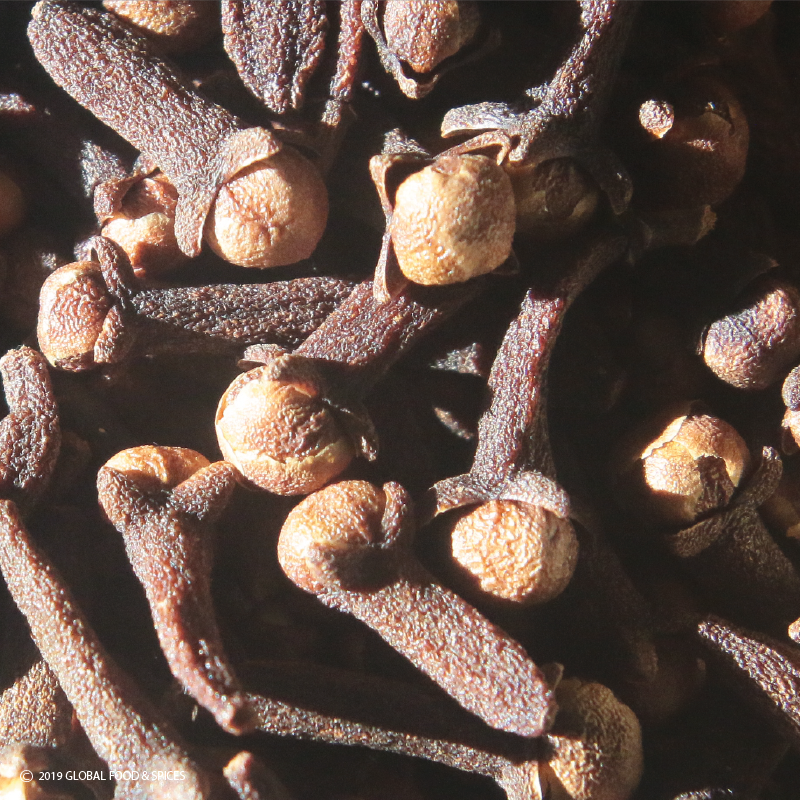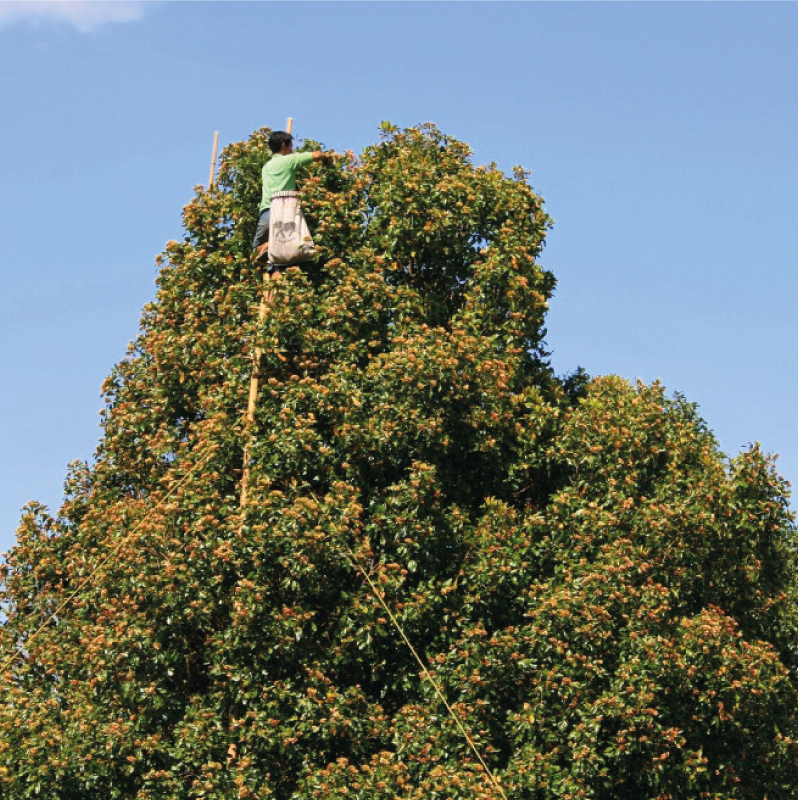depeperwinkel
Wood clove
Wood clove
In stock
Unable to load availability for pickup
A clove is the unopened flower bud of the clove tree. Our forest clove comes from a cultivation in the jungle in a nature reserve in India. The cultivation is therefore organic and the method of harvesting 'spotless', with the result being a fresh red-brown head that you can squeeze between your fingers. And exceptionally aromatic!
The clove comes from the Syzygium aromaticum, a tree that originally only grew in the Moluccas, especially in the sultanates of the North Moluccas (Maluku Utara).
The clove tree is a 10-15 meter high tree that bears cream-colored flowers, which turn red during flowering. It often does not happen, because before the flowers come out, the buds are picked to be dried into what we call cloves.
The tree first bears flowers in the fourth to seventh year, and can live for eighty years. The buds are picked by hand by experienced pickers. The moment at which the buds are harvested is quite precise, the buds must be nice and round, and already starting to color. As soon as a bud opens, it is unusable as a spice.
The Portuguese discovered the clove location in 1424, long before the Dutch asserted their supremacy in the Moluccas and forcibly appropriated the clove trade. By means that cannot bear the light of day, they achieved that cultivation was limited to the island of Ambon in the Central Moluccas. Nowhere else in the world did the clove tree grow.
On May 8th, the Banda Massacre is remembered annually, 400 years ago. The West-Fries Museum looks back on it online.
The Frenchman Pierre Poivre (no joke) succeeded, despite all the precautions of the Dutch, in 1770 to alienate plant material from the Moluccas and plant it on the French tropical island of Saint Mauritius off the coast of Africa. He succeeded in breaking the monopoly of the VOC on the cultivation of cloves. Today, cloves are cultivated all over the world, and Indonesia is the absolute world leader with plantations on Sulawesi and Java. Cultivation on the Moluccas is of minor importance.
Our Premium siputih cloves have a thousand weight of 100 grams (one thousand buds per ounce) and are of very high quality. They are dried in such a way that the stem is well dried, but the reddish-brown bud has remained quite soft. You can easily remove it from the stem and squeeze it between your fingers. The exuberant aroma tells the rest.
Smell and taste
The clove aroma comes from the pungent eugenol, and combines well with spices and herbs that also contain eugenol, such as nutmeg, allspice, cinnamon, pepper, vanilla (eugenol is the raw material for the preparation of vanillin), basil and star anise.
Usage
Cloves are suitable for sweet and savoury preparations, both in baked goods and desserts, as well as in roasts and stews, in sauerkraut dishes and curries, and of course in sauerkraut, red cabbage and mulled wine. Many famous spice mixtures contain cloves.
Features:
- 100% dried flower buds of the Sygyzium aromaticum
- wild picking - hand picked
Assortment
- available in glass and stand-up pouch (no test tubes)
- glass jar contains 45 grams
- larger quantities on request
Gift wrapping
- the glass jar is available in a tasteful gift packaging consisting of a cube box filled with black tissue paper
- For an overview of our gift packaging, please refer to the gift packaging section
General advice
- store cloves in a dark, dry and cool place
Save:
- save your cloves in sealed packaging
- preferably store in a dark, dry and cool place
- at least good until June 2026 (06-2026)
- This expiration date is an indication
Batch number
The batch number helps us trace which supply an item originates from. It is stated on the packing slip and the invoice
Share
